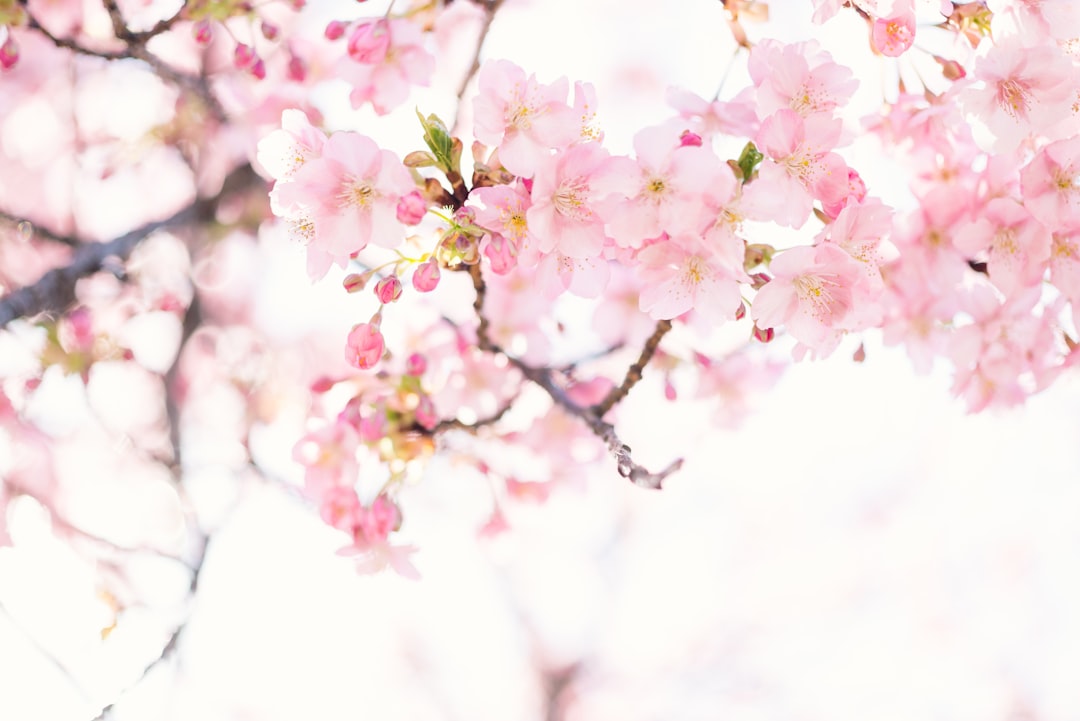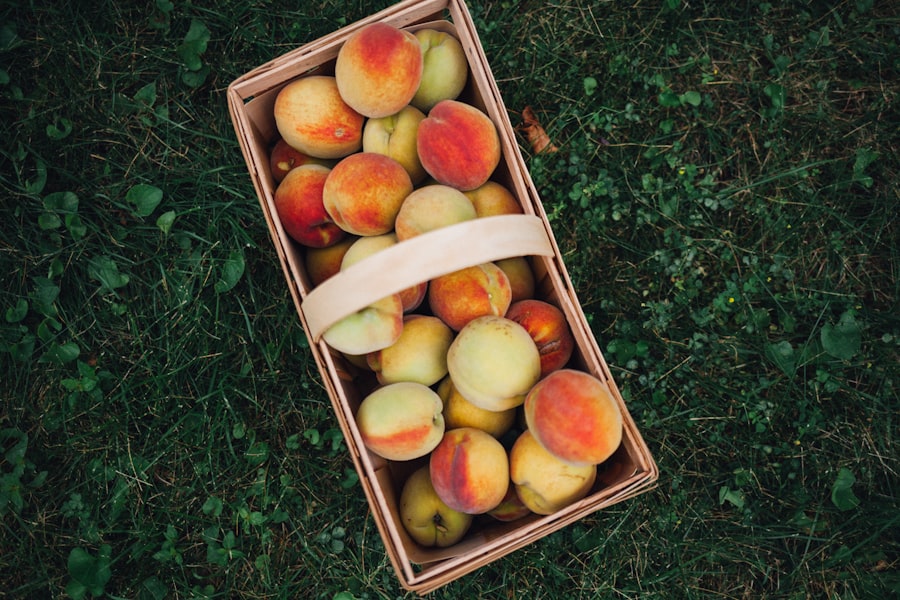How tall do peach trees grow?

Peach trees are a popular fruit tree that is known for its delicious and juicy peaches. They are widely cultivated in many parts of the world, including the United States, China, and Spain. Peach trees are loved by gardeners and farmers alike for their beautiful blossoms in the spring and their bountiful harvests in the summer.
Understanding the growth of peach trees is crucial for successful cultivation. By understanding the factors that affect their growth, such as climate, soil, water, and nutrients, growers can provide the optimal conditions for their peach trees to thrive. This knowledge can help ensure healthy and productive trees that produce high-quality fruit.
Key Takeaways
- Peach trees are a popular fruit tree that can grow up to 25 feet tall.
- The growth of peach trees is influenced by factors such as soil, climate, and pruning techniques.
- The average height of peach trees is around 12-15 feet, but they can be dwarfed to as short as 6 feet or grow as tall as 25 feet.
- Pruning techniques such as heading back and thinning can help control the height of peach trees.
- To grow healthy and tall peach trees, it is important to provide proper soil, water, and sunlight, and to address common problems such as pests and diseases.
Understanding the Growth of Peach Trees
The life cycle of a peach tree begins with a seed. The seed germinates and grows into a seedling, which eventually develops into a young tree. As the tree matures, it produces flowers in the spring, which are then pollinated by bees or other insects. After pollination, the flowers develop into fruits, which ripen and are ready for harvest in the summer.
Several factors can affect the growth of peach trees. Climate plays a significant role, as peach trees require a certain number of chilling hours during the winter to break dormancy and initiate bud development. The amount of rainfall and temperature during the growing season also impact tree growth. Additionally, soil quality and fertility are crucial for providing the necessary nutrients for tree growth.
Factors Affecting the Height of Peach Trees
The height of peach trees can vary depending on several factors. Genetics and variety play a significant role in determining how tall a peach tree can grow. Some varieties are naturally taller than others, while others have been bred to be more compact.
Environmental factors also influence tree height. Temperature affects tree growth, with warmer temperatures generally resulting in taller trees. Adequate rainfall is essential for tree growth as well, as water is necessary for nutrient uptake and overall tree health.
Cultural practices, such as pruning and fertilization, can also impact tree height. Pruning can help control the height of peach trees by removing excess branches and promoting a more compact growth habit. Fertilization provides the necessary nutrients for tree growth, which can affect overall height.
The Average Height of Peach Trees
| Year | Average Height (feet) | Standard Deviation |
|---|---|---|
| 2015 | 8.2 | 1.3 |
| 2016 | 8.5 | 1.2 |
| 2017 | 8.8 | 1.1 |
| 2018 | 9.1 | 1.0 |
| 2019 | 9.4 | 0.9 |
The average height of peach trees can vary depending on the variety. Some varieties are naturally shorter, while others can grow quite tall. On average, peach trees can range in height from 10 to 25 feet.
Factors that contribute to taller or shorter trees include genetics, environmental conditions, and cultural practices. Some varieties are genetically predisposed to be taller or shorter, while environmental factors such as temperature and rainfall can impact overall tree growth. Cultural practices such as pruning and fertilization can also influence tree height.
Dwarf Peach Trees: How Short Can They Get?
Dwarf peach trees are a popular choice for home gardeners with limited space. These trees are bred to be smaller in size, making them more manageable and easier to harvest. Dwarf peach trees typically reach a height of 6 to 10 feet.
There are several advantages to growing dwarf peach trees. Their smaller size makes them easier to care for and harvest. They also tend to produce fruit at a younger age compared to standard-sized trees. However, there are also disadvantages to growing dwarf peach trees. They may have a reduced yield compared to larger trees, and their smaller size may make them more susceptible to wind damage.
Tall Peach Trees: How High Can They Grow?

While dwarf peach trees are popular for their compact size, some growers prefer taller peach trees for various reasons. Tall peach trees can provide more shade and privacy in a garden or orchard setting. They may also have a higher yield compared to shorter trees.
The maximum height range for peach trees is typically around 25 feet. However, some varieties may grow even taller under optimal conditions. It is important to note that growing very tall peach trees can present challenges, such as the need for additional support to prevent branches from breaking under the weight of the fruit.
Pruning Techniques for Controlling Peach Tree Height
Pruning is an essential practice for maintaining the health and productivity of peach trees. It can also be used to control tree height. There are several pruning techniques that can be employed to manage the height of peach trees.
Heading is a pruning technique that involves cutting back the main branches of the tree to a desired height. This encourages new growth and helps control the overall height of the tree. Thinning is another technique that involves removing excess branches to improve air circulation and light penetration, which can help control tree height.
The timing and frequency of pruning are also important factors to consider. Pruning should be done during the dormant season, typically in late winter or early spring before new growth begins. Regular pruning every year or every other year can help maintain the desired height and shape of peach trees.
Tips for Growing Healthy and Tall Peach Trees
To grow healthy and tall peach trees, several factors should be considered. Soil preparation is crucial, as peach trees prefer well-draining soil that is rich in organic matter. Adding compost or aged manure to the soil before planting can help improve fertility and drainage.
Watering and irrigation are also important for peach tree growth. Trees should be watered deeply but infrequently, allowing the soil to dry out slightly between waterings. Mulching around the base of the tree can help conserve moisture and suppress weed growth.
Pest and disease management is essential for maintaining tree health. Regular monitoring for pests such as aphids, mites, and peach tree borers is recommended. Disease prevention measures, such as proper sanitation and fungicide applications, can help prevent common diseases such as peach leaf curl and brown rot.
Sunlight and temperature requirements should also be considered when growing peach trees. They require full sun, at least six to eight hours of direct sunlight per day, to thrive. Peach trees also require a certain number of chilling hours during the winter to break dormancy and initiate bud development.
Common Problems that Affect Peach Tree Growth
Peach trees can be susceptible to various pests and diseases that can impact their growth and overall health. Some common pests that affect peach trees include aphids, mites, and peach tree borers. These pests can cause damage to leaves, flowers, and fruit, leading to reduced tree growth and yield.
Environmental factors can also damage peach trees. Frost and freeze events during the spring can damage blossoms and young fruit, resulting in reduced yields. Drought conditions can also stress trees and impact their growth.
To prevent and treat problems, growers should implement strategies such as regular monitoring for pests, proper sanitation practices, and timely application of pesticides or fungicides when necessary. Providing adequate water and nutrients can help trees withstand environmental stresses.
Growing Peach Trees to Their Full Potential
Understanding the growth of peach trees is crucial for successful cultivation. By understanding the factors that affect their growth, growers can provide optimal conditions for their peach trees to thrive. Factors such as genetics, environmental conditions, and cultural practices all play a role in determining tree height.
Whether growing dwarf or tall peach trees, proper care and maintenance are essential for healthy and productive trees. Pruning techniques can be employed to control tree height, while proper soil preparation, watering, pest and disease management, and sunlight requirements should be considered for optimal tree growth.
By following these tips and understanding the factors that affect peach tree growth, growers can cultivate healthy and productive peach trees that reach their full potential. With proper care, these trees will provide bountiful harvests of delicious and juicy peaches for years to come.
If you’re curious about how tall peach trees can grow, you’ll find a fascinating article on Lawn World’s website. This comprehensive guide explores the height potential of peach trees and provides valuable insights for gardeners and orchard enthusiasts. Discover the secrets to cultivating healthy and towering peach trees by clicking here.
FAQs
What is the average height of a peach tree?
The average height of a peach tree is between 12 to 18 feet.
Can peach trees grow taller than 18 feet?
Yes, some peach tree varieties can grow up to 25 feet tall.
What factors affect the height of a peach tree?
The height of a peach tree can be affected by factors such as the variety of the tree, the soil quality, the amount of sunlight and water it receives, and the pruning techniques used.
How long does it take for a peach tree to reach its full height?
It takes about 3 to 5 years for a peach tree to reach its full height.
Do dwarf peach trees grow shorter than regular peach trees?
Yes, dwarf peach trees are smaller in size and can grow up to 8 feet tall.
Can the height of a peach tree be controlled through pruning?
Yes, the height of a peach tree can be controlled through pruning techniques such as heading back and thinning out branches.



